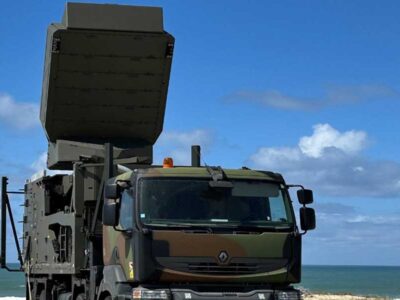The UK MoD Equipment Plan for the next decade is unaffordable and is facing the largest budget deficit since the Plan was first published in 2012.
~
NAO Press Release, London, 04 December 2023: The Ministry of Defence’s (MoD) Equipment Plan (the Plan) for the next decade is unaffordable and it is facing the largest budget deficit since the Plan was first published in 2012, according to a new report by the National Audit Office (NAO).
The report – The Equipment Plan 2023–2033 – reveals that forecast costs exceed the current budget by £16.9 billion. At the end of March this year the estimated costs were £305.5 billion compared to a budget of £288.6 billion. This contrasts with the previous year’s Plan, for 2022 to 2032, in which the forecast costs were £2.6 billion less than the available budget. The Plan is unaffordable because forecast costs have risen by £65.7 billion (27%) compared with the previous Plan, outstripping a budget increase of £46.3 billion (19%).
The largest cost increases are in nuclear and naval programmes, whose combined costs have risen by £54.6 billion. The NAO found that the MoD’s decision to prioritise delivering the replacement nuclear deterrent on schedule has led to cost increases at the Defence Nuclear Organisation (DNO) of £38.2 billion, a rise of 62% compared with last year’s Plan.1
Forecast costs for the Navy, which delivers parts of the nuclear capability, have risen by £16.4 billion, 41% up on the previous Plan. This follows the Navy reconsidering its previous policy of only including forecast costs it can afford. Its new policy is to include the full predicted costs for the capabilities the MoD expects it to deliver. As a result it is reporting a deficit of £15.3 billion in this year’s Plan, compared with a surplus of £0.7 billion in 2022.
Inflation has contributed to the Plan’s increased costs, but the MoD has not received additional funding for inflationary pressures so the Top Level Budgets (TLBs)2 must manage the effects of it within their existing budgets. In August 2023 the MoD estimated that inflation would account for £10.9 billion of the Plan’s cost increases.
The MoD is not planning to cancel programmes in the short-term and told the NAO that doing so would limit the choices available to decision-makers at the next Spending Review. It is currently considering using an extra £1.95 billion provided in the 2023 Spring Budget for improving resilience and readiness to offset its funding shortfall in 2023-24 and 2024-25.
The MoD has reduced total forecast costs by £35.9 billion, based on cost reductions that it expects the TLBs to make and on the TLBs’ expectations about whether they will be able to deliver their projects as planned. It estimates that the Plan’s funding gap could range between £7.6 billion and £29.8 billion, depending on whether risks or opportunities materialise.
However, the Equipment Plan does not reflect all the cost pressures to develop new and support existing capabilities that were set out in the 2021 Integrated Review, which was refreshed in 2023, and the accompanying Defence Command Papers. TLBs have taken different approaches to preparing their forecasts in the Plan: some include full predicted costs for the capabilities that the government expects the MoD to provide, while others only include those they can afford. This means the Plan does not disclose the full funding gap between government objectives and the budget available, and therefore underestimates the cost pressure that the MoD faces.3 The MoD does not know what the forecast costs would be if the Plan included all capabilities outlined in the Integrated Review and Defence Command Paper.
None of the six TLBs has an affordable equipment plan, and their overall forecast costs, including workforce and estates as well as equipment, also exceed their budgets.4 Every TLB has a deficit in its individual plan, ranging from £1.1 billion at the UK Strategic Command to £36.7 billion at the DNO, although the DNO deficit does not take account of centrally held funding for the new Defence Nuclear Enterprise.5
Skills gaps, shortages of key components, and increased demand for defence equipment in other countries in response to the war in Ukraine, are having an impact on the supply chain. The MoD expects these delays will add to its cost pressure in the future.
The NAO recommends that the MoD assess the effect of delaying major decisions on each TLB and ensure that Parliament and decision-makers understand the financial and capability impacts of this delay. It also calls for greater consistency in each TLB’s equipment plan, including MoD providing clear guidance on whether TLBs should include the full predicted costs of the capabilities they are being asked to provide to fulfil defence commitments, regardless of the available budget.
“The MoD acknowledges that its Equipment Plan for 2023–2033 is unaffordable, with forecast costs exceeding its current budget by almost £17 billion. This is a marked deterioration in the financial position since the previous Plan.
“Deferring choices on spending priorities until after the Spending Review, while understandable given the government’s ambitions expressed in the updated Integrated Review, risks poor value for money if programmes continue which are later cancelled, scaled down or deferred because they are unaffordable.
“The MoD should consider how future Plans can achieve their core purpose: providing a reliable assessment of the affordability of its equipment programme and demonstrating to Parliament how it will manage its funding to deliver equipment projects.” Gareth Davies, head of the NAO.
¤ Notes:-
- The creation of a ringfence around nuclear funding helps protect the MoD’s highest defence priority but puts greater pressure on programmes not included in it.
- Managing equipment programmes is the responsibility of the Front-Line Commands (the Royal Navy, the Army, the Royal Air Force, the UK Strategic Command, the Defence Nuclear Organisation and the Strategic Programmes Directorate. These organisations are known as Top Level Budgets.
- Omitted projects include the operational extension of Warrior and Challenger 2 armoured vehicles, and the programme to deliver long-range ‘land precision strike’ weapons. Other project costs are included in the plan but are not fully funded. For example, new entries into the shipbuilding pipeline – including Multi-Role Ocean Surveillance ships, Type 32 Frigates, Multi-Role Support Ships, Type 83 destroyers, and Future Air Dominance System – are unaffordable by £5.9 billion against currently allocated budgets, and Commando Force is not currently funded to operate from the sea in a high-threat maritime environment.
- Financial pressures have also affected costs in other areas. The MoD forecasts that during the 10 years to 2032-33, total defence spending will exceed the total defence budget by £42.5 billion, compared with a £4 billion deficit last year. All six TLBs have total forecast costs over the 10-year period which exceed their total budgets, ranging from a deficit of £3.0 billion at the UK Strategic Command to £38.9 billion at the DNO. The TLBs are focusing on remaining within their budgets in the 2023-24 and 2024-25 financial years.
- At 31 March 2023, following the Spring Budget 2023, the MoD had retained an additional £34.5 billion funding for the Defence Nuclear Enterprise (DNE) as centrally managed expenditure, rather than delegating it to the TLBs included in the DNE: the DNO, the Navy and the UK Strategic Command.
~$~$~$~
UPDATED
The ‘Update on Affordability’ letter from the Permanent Secretary at the Ministry of Defence to the Chair of the Public Accounts Committee, published online and circulated at 09:53, can be read here:-
¤ Defence Equipment Plan 2023-2033 – update on affordability (PDF)
<><><>




















